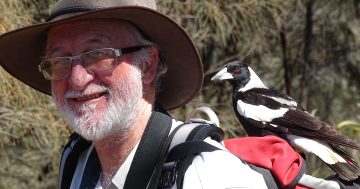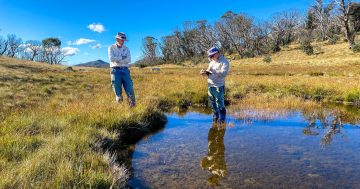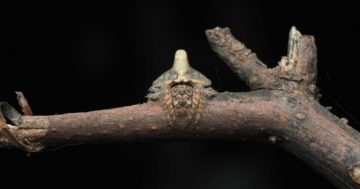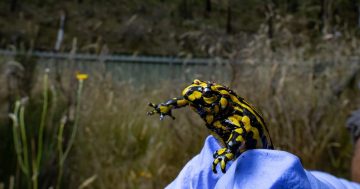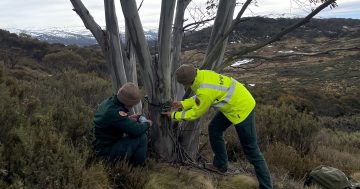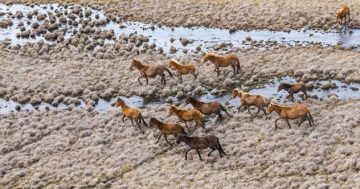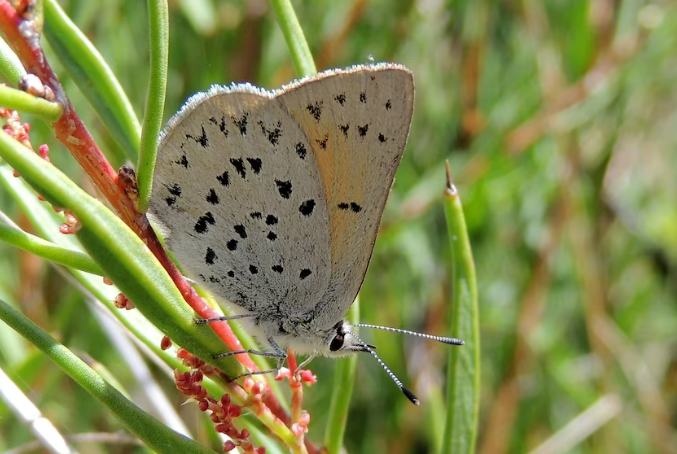
The Spotted Trident-Blue butterfly was first photographed in 2017 but wasn’t classified until 2023. Photo: Michael Braby.
Fluttering from the subalpine frost hollows of southern ACT and nearby NSW areas, a previously unknown butterfly species has finally been given a name.
The new butterfly was previously considered as part of the genus Cyprotides or trident-blues, but has been recognised as its own entity, called the Spotted Trident-Blue (Cyprotides maculosus).
ANU Honorary Associate Professor and Australian National Insect Collection scientist Michael Braby was the one who carried out investigations into classifying this previously unrecognised butterfly.
Assoc Prof Braby first came across the butterfly in a 2017 photo captured in the Namadgi National Park by citizen scientist Matthew Frawley.
When he saw it, he wondered if this was, in fact, a new species.
“I was suspicious of the photo from 2017. I wasn’t sure if it was just a one-off,” Assoc Prof Braby said.
“I was fairly sure this was a different species, but I really needed more information.”
What he needed was a physical specimen to be able to carry out a proper analysis, so he joined the ACT Government-funded Bush Blitz in 2018 to try to find the butterfly.
But he looked in the wrong place at the wrong time of year.
“Of course, I didn’t find it,” Assoc Prof Braby explained.
One of his friends, botanist Justin Armstrong, came across three of the butterflies in 2019 in the Tantangara area of the Kosciuszko National Park and managed to catch one.
“Now this was too much of a coincidence to be a one-off variant … I thought, ‘we’ve got something here’,” Assoc Prof Braby said.
Throughout 2020 and 2021, he conducted further investigations to find breeding sites and determine the butterfly’s taxonomic status.
He discovered the Spotted Trident-Blue has an “exceedingly small world distribution”. So far it’s only found in areas of southern ACT and adjacent areas of NSW at about 1100 to 1500 metres above sea level.
It appears to be restricted to the high mountains, breeding in subalpine frost hollows.
Assoc Prof Braby said it wasn’t uncommon for butterflies to be found at such high altitudes.
“We think of butterflies as flying in warm summer conditions, but it certainly gets warm enough up there,” he said.
The Spotted Trident-Blue is closely related to other Cyprotides found in the region, such as the sandstone and arid areas of Sydney and Braidwood. However, the main difference is in the external appearance of the wings.
This includes a silvery/pale-grey underside of the wings with enlarged black spots with a “yellow flush”.
There are also differences in the dorsal (topside) wing colour and internal genitalia.
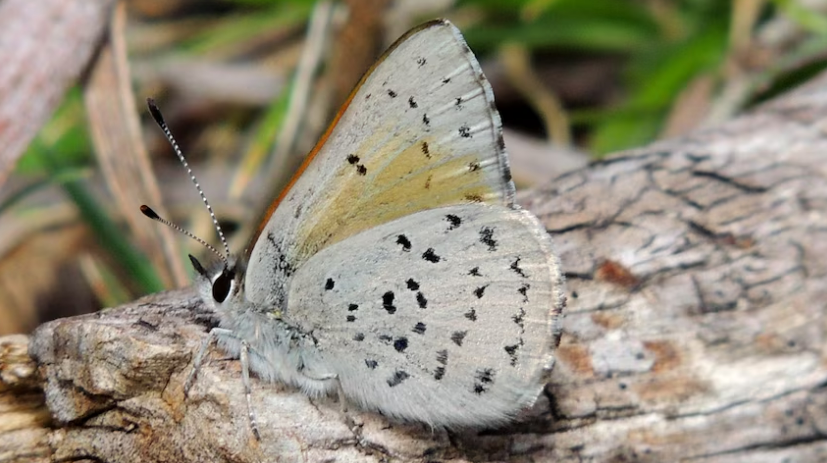
The Spotted Trident-Blue appears to only live in the high mountains of southern ACT and nearby NSW. Photo: Michael Braby.
Assoc Prof Braby explained this was the first new butterfly species discovered in Australia in eight years.
“For butterflies, this is huge because not that many new species turn up,” he said.
“Butterflies are pretty well known. It’s estimated about 90 per cent of the species have already been described.
“[Also] most new species are discovered by looking back through the taxidermy or reclassification … but to find something completely new that’s never been collected before is quite rare.”
Given the rigorous scientific processes needed to confirm a new species, Assoc Prof Braby said six years was a “pretty good” timeframe to go from seeing a new species to actually cataloguing it.
He said this discovery showed the fundamental gaps which still existed in our knowledge of the country’s biodiversity.
“It highlights that our biodiversity is by no means completely catalogued, and it adds more information to our amazing country,” Assoc Prof Braby said.
“We have so much biodiversity left to discover.”
The priority now is to learn more about the Spotted Trident-Blues, and to see if it can be found elsewhere.
He’s particularly interested in examining northeast Victoria, which has a similar profile to where the butterfly has been found so far.
But if it’s found the butterfly only lives in the southern ACT and nearby NSW areas, that would have a wider impact.
“If it is restricted … that does mean there are some issues around conservation and management,” Assoc Prof Braby said.
He said this discovery highlighted the importance of citizen scientists continuing their work.
“Citizen scientists are a very powerful tool and gaining momentum,” Assoc Prof Braby said.
“From them, we get information on what’s out there, and more information about known species as well.”












